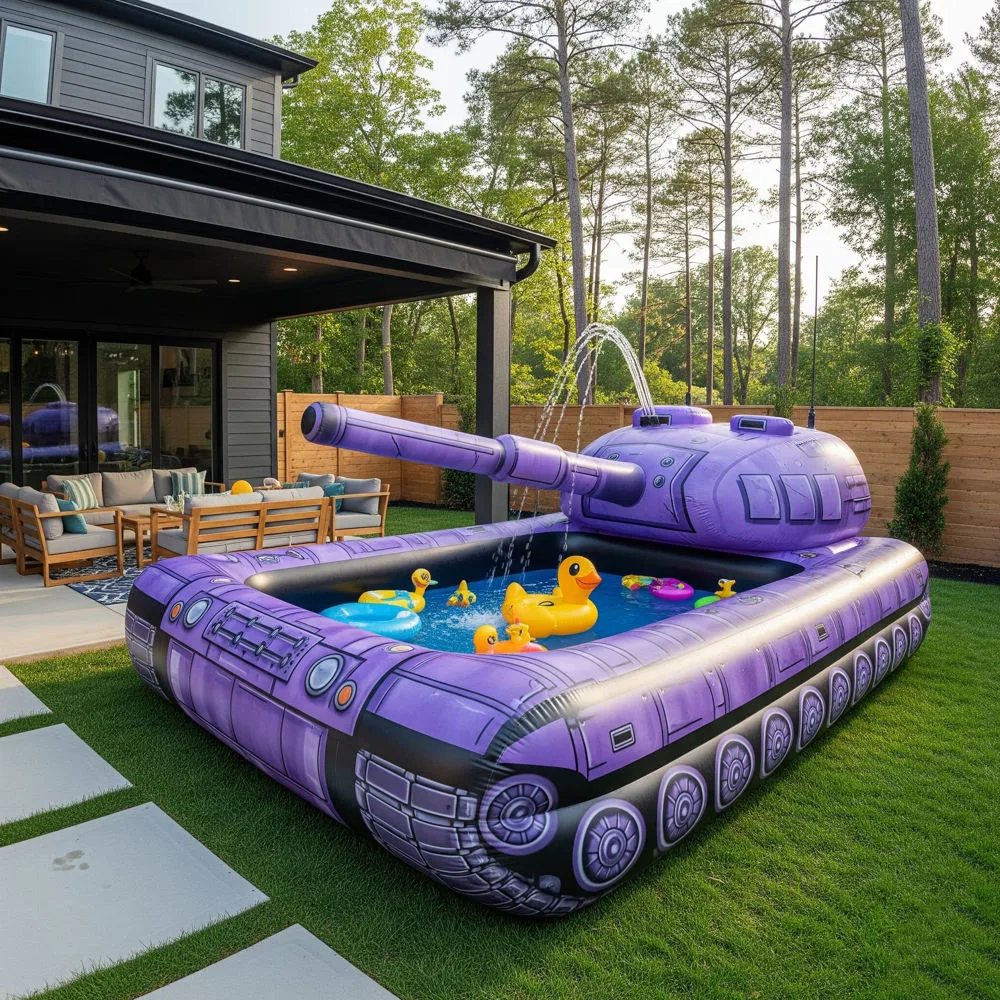Summer heat can be unbearable, and nothing beats the refreshing embrace of cool water on a scorching day. While traditional swimming pools require significant investment and permanent installation, there’s a game changing alternative that’s revolutionizing backyard entertainment: the inflatable tank pool. These versatile aquatic solutions offer the perfect blend of convenience, affordability, and pure summer enjoyment.
What Makes an Inflatable Tank Pool Special?
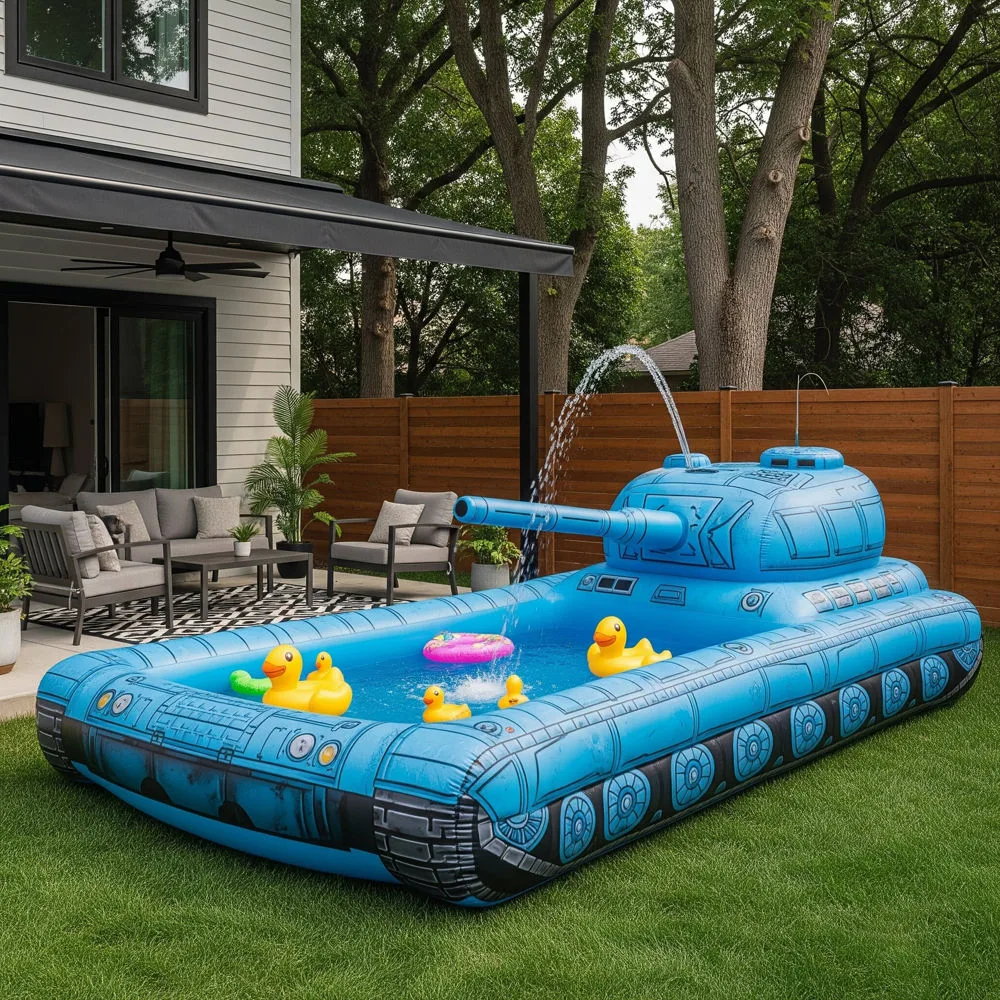
An inflatable tank pool represents the evolution of portable swimming solutions. Unlike basic kiddie pools or flimsy inflatable rings, these robust structures are engineered to withstand regular use while providing a genuine swimming experience. The “tank” designation refers to their sturdy construction and substantial water capacity, making them feel more like permanent installations than temporary setups.
These pools combine the best of both worlds: the accessibility of inflatable products with the durability and functionality of traditional above ground pools. They’re designed to accommodate multiple swimmers, support various water activities, and maintain their shape and integrity throughout extended use.
Key Features That Set Them Apart
The modern inflatable tank pool incorporates advanced materials and engineering principles that distinguish it from conventional inflatable pools. Triple layer construction with puncture resistant materials ensures longevity, while reinforced seams prevent the weak points that plague cheaper alternatives. Many models feature integrated filtration systems, making maintenance surprisingly manageable.
The structural design typically includes vertical support columns or ring systems that distribute weight evenly, preventing the sagging and instability common in basic inflatable pools. This engineering approach allows for deeper water levels and more confident swimming experiences.
Choosing the Perfect Inflatable Tank Pool for Your Space
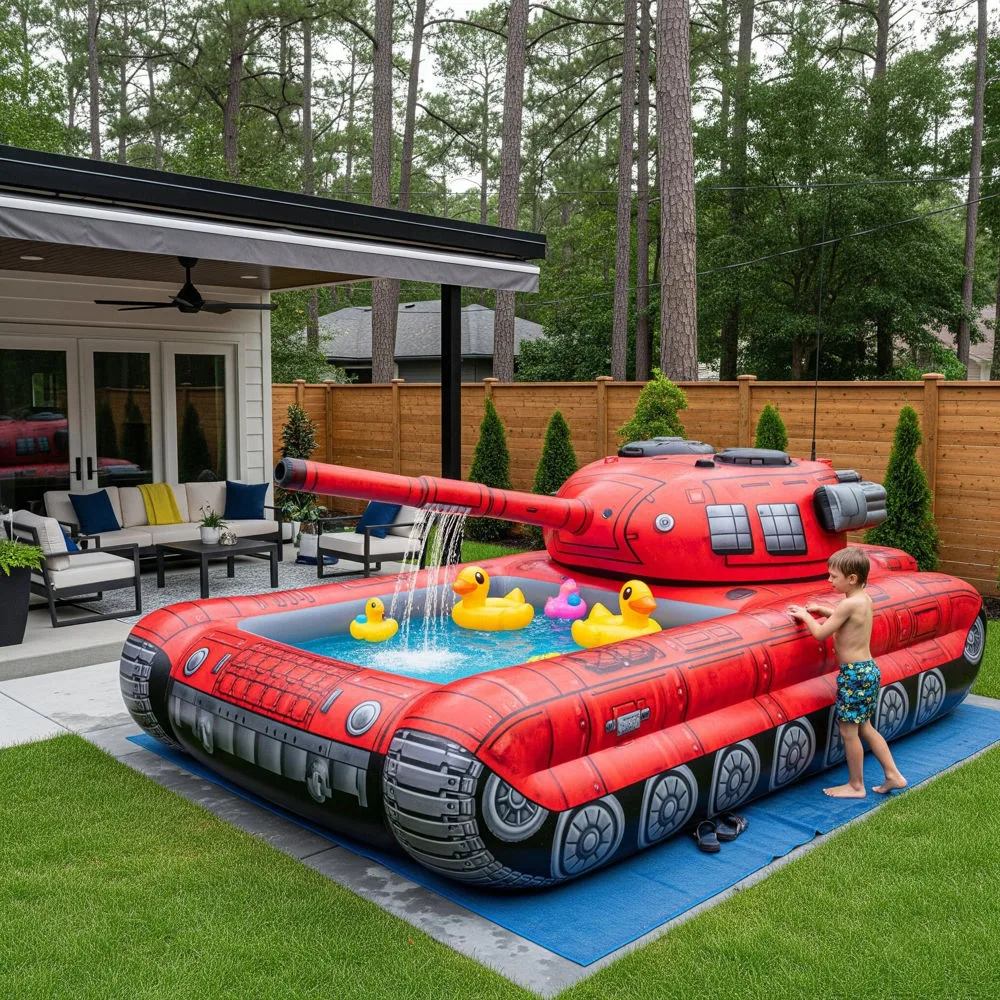
Selecting the right inflatable tank pool requires careful consideration of several factors that will determine your satisfaction and the pool’s performance over time. The decision process involves evaluating your available space, intended use, budget constraints, and maintenance capabilities.
Size and Capacity Considerations
The first step in choosing your inflatable tank pool involves measuring your available space and determining your capacity needs. These pools come in various sizes, from compact 8 foot diameter models perfect for small families to expansive 20 foot options that can accommodate neighborhood gatherings.
Consider not just the pool’s footprint but also the clearance needed around it for safe entry and exit. Factor in space for pool equipment, maintenance access, and any local regulations regarding setbacks from property lines or structures.
Water capacity directly impacts both enjoyment and operational costs. Larger pools require more time to fill, more chemicals for maintenance, and more powerful filtration systems. However, they also provide more swimming space and can accommodate more people simultaneously.
Material Quality and Construction
The longevity and performance of your inflatable tank pool depend heavily on material quality and construction methods. Look for pools constructed with multiple layer materials, typically featuring a tough outer layer, a reinforcing middle layer, and a puncture resistant inner layer.
High quality models often incorporate military grade materials or automotive quality fabrics that resist UV degradation, temperature fluctuations, and chemical exposure. The seam construction should feature welded or heat sealed joints rather than simple glued connections, as these provide superior strength and longevity.
Filtration and Maintenance Systems
Modern inflatable tank pools often include sophisticated filtration systems that rival those found in permanent installations. Sand filters, cartridge systems, and even saltwater generators are available options that can dramatically reduce maintenance requirements.
Consider the pump capacity and filtration rate when evaluating options. The entire pool volume should be filtered every 6 to 8 hours for optimal water quality. Some systems include timers and automated chemical dispensers that further simplify maintenance routines.
Installation and Setup: Getting Your Pool Ready
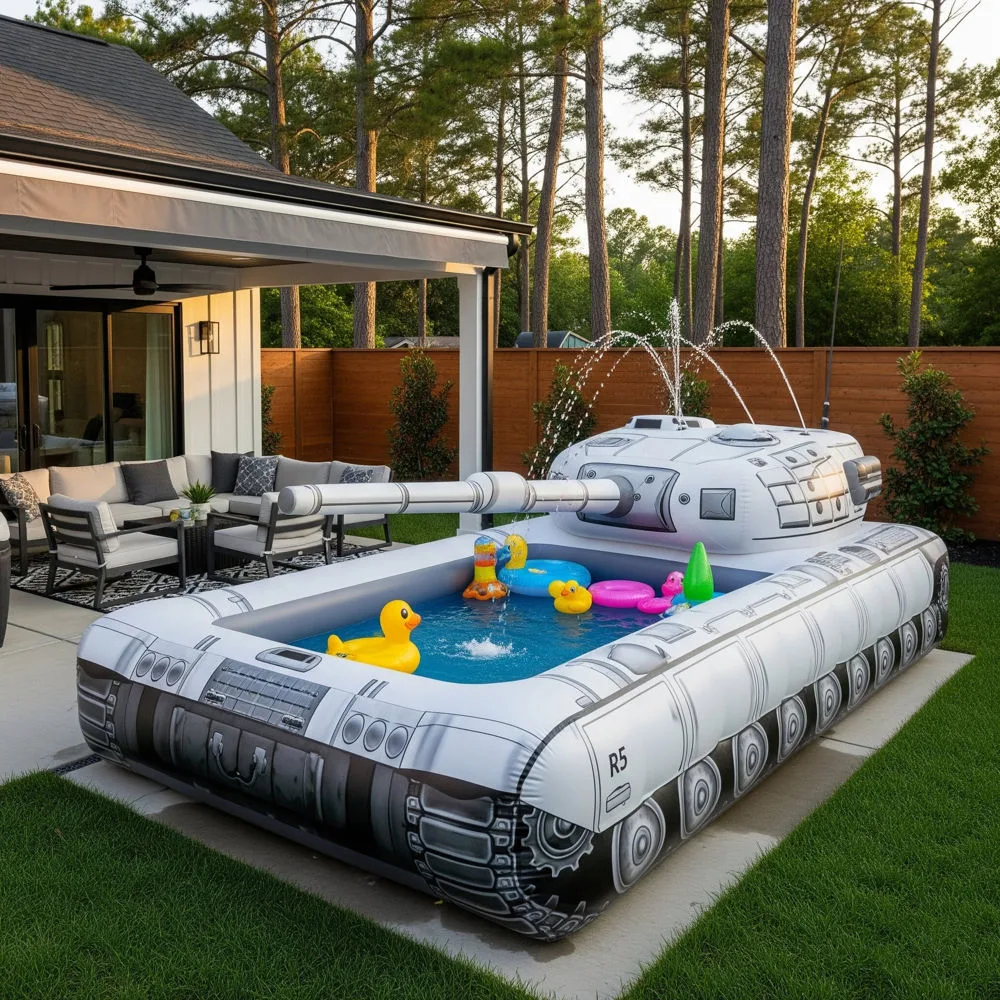
Setting up an inflatable tank pool properly is crucial for safety, performance, and longevity. While these pools are designed for easier installation than permanent alternatives, proper preparation and attention to detail during setup will prevent problems and extend the pool’s life.
Site Preparation Fundamentals
The foundation of a successful inflatable tank pool installation begins with proper site preparation. The chosen location must be level, stable, and free from sharp objects or debris that could damage the pool bottom. Even small rocks or sticks can create pressure points that lead to punctures over time.
Begin by marking the pool’s footprint and removing all grass, roots, and organic matter from the area. Create a level surface using sand, crushed limestone, or specialized pool base materials. The surface should be smooth and compacted to prevent settling that could create stress points.
Consider drainage patterns and proximity to electrical outlets and water sources. The pool should be positioned where it won’t interfere with utility lines or create runoff problems during heavy rains.
Professional vs DIY Installation
While many inflatable tank pool owners successfully complete installation themselves, certain situations may warrant professional assistance. Complex electrical connections for filtration systems, significant site grading requirements, or local permit requirements might necessitate professional involvement.
DIY installation typically takes 4 to 8 hours with 2 to 3 people, depending on the pool size and site conditions. Having the right tools and helpers makes the process much smoother and safer.
Initial Water Filling and System Startup
The initial filling process requires patience and attention to detail. Start with a small amount of water to check for leaks and ensure proper positioning before committing to a full fill. Monitor the pool’s shape and stability as water levels rise, making adjustments as needed.
Once filled, the filtration system startup involves priming pumps, checking connections, and establishing proper water chemistry. This initial balancing process is crucial for preventing algae growth and maintaining water clarity.
Maintenance Made Simple: Keeping Your Pool Perfect
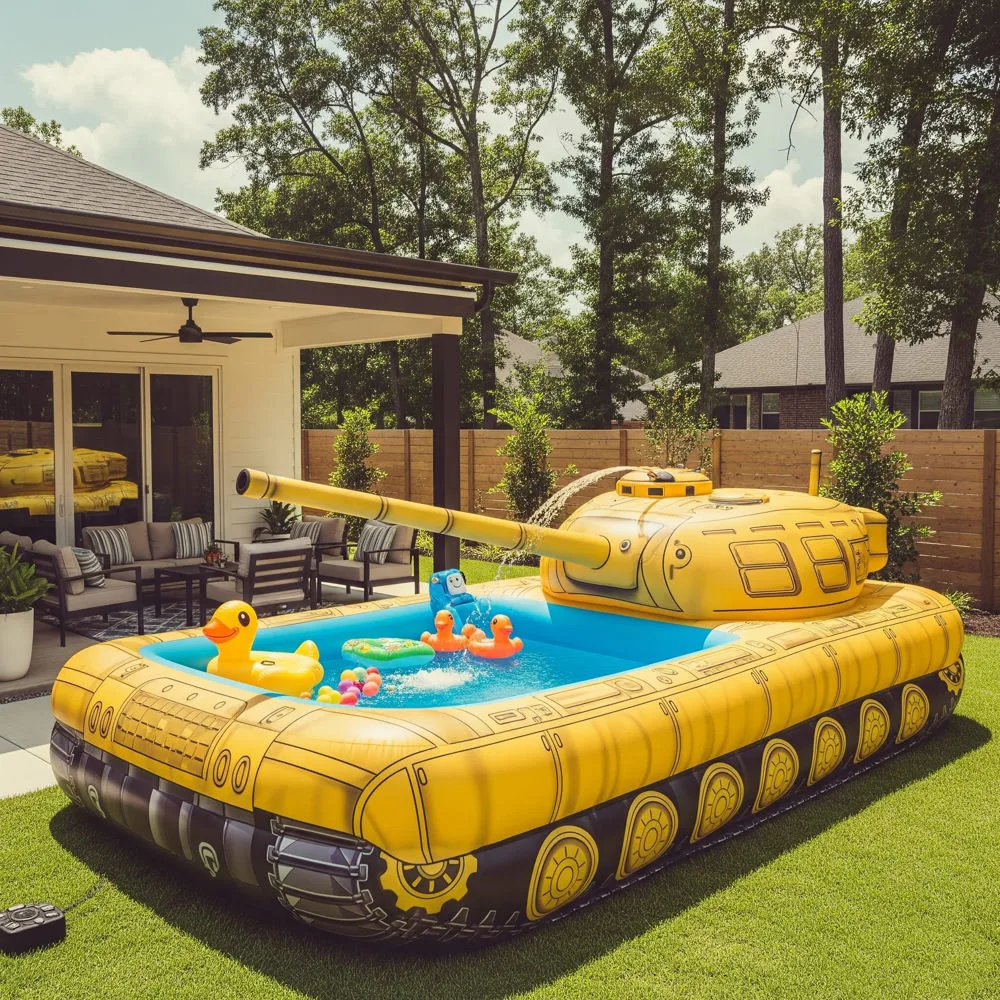
Maintaining an inflatable tank pool requires consistent attention but doesn’t have to be overwhelming. Understanding the basics of water chemistry, filtration management, and preventive care will keep your pool sparkling clean and ready for enjoyment throughout the swimming season.
Water Chemistry Essentials
Proper water chemistry is the foundation of pool maintenance, affecting everything from water clarity to swimmer comfort and equipment longevity. The key parameters to monitor include pH levels, chlorine or sanitizer concentration, alkalinity, and calcium hardness.
Test water chemistry at least twice weekly during active use, adjusting chemicals as needed to maintain proper balance. pH should remain between 7.2 and 7.8, while chlorine levels should stay between 1.0 and 3.0 parts per million for optimal sanitation without irritation.
Alkalinity acts as a buffer for pH changes and should be maintained between 80 and 120 parts per million. Calcium hardness prevents corrosion and scaling, with optimal levels between 150 and 300 parts per million.
Filtration System Management
The filtration system is your pool’s circulatory system, removing contaminants and distributing chemicals throughout the water. Regular maintenance of this system is essential for water quality and equipment longevity.
Clean or replace filter media according to manufacturer recommendations, typically every 2 to 4 weeks during active use. Monitor pump performance and clear any debris from skimmer baskets or pump strainers that could restrict flow.
Backwash sand filters when pressure gauges indicate buildup, and inspect all connections regularly for leaks or loose fittings that could compromise system efficiency.
Seasonal Care and Storage
Proper seasonal care extends the life of your inflatable tank pool significantly. In climates where freezing occurs, complete winterization is essential to prevent damage from ice expansion.
Begin winterization by thoroughly cleaning the pool and balancing water chemistry. Lower water levels below skimmer and return fittings, and add winterizing chemicals to prevent algae growth during closure.
In moderate climates, pools may remain operational year round with reduced maintenance schedules. However, even in these areas, periodic deep cleaning and equipment inspection are important for optimal performance.
Safety First: Protecting Your Family and Guests
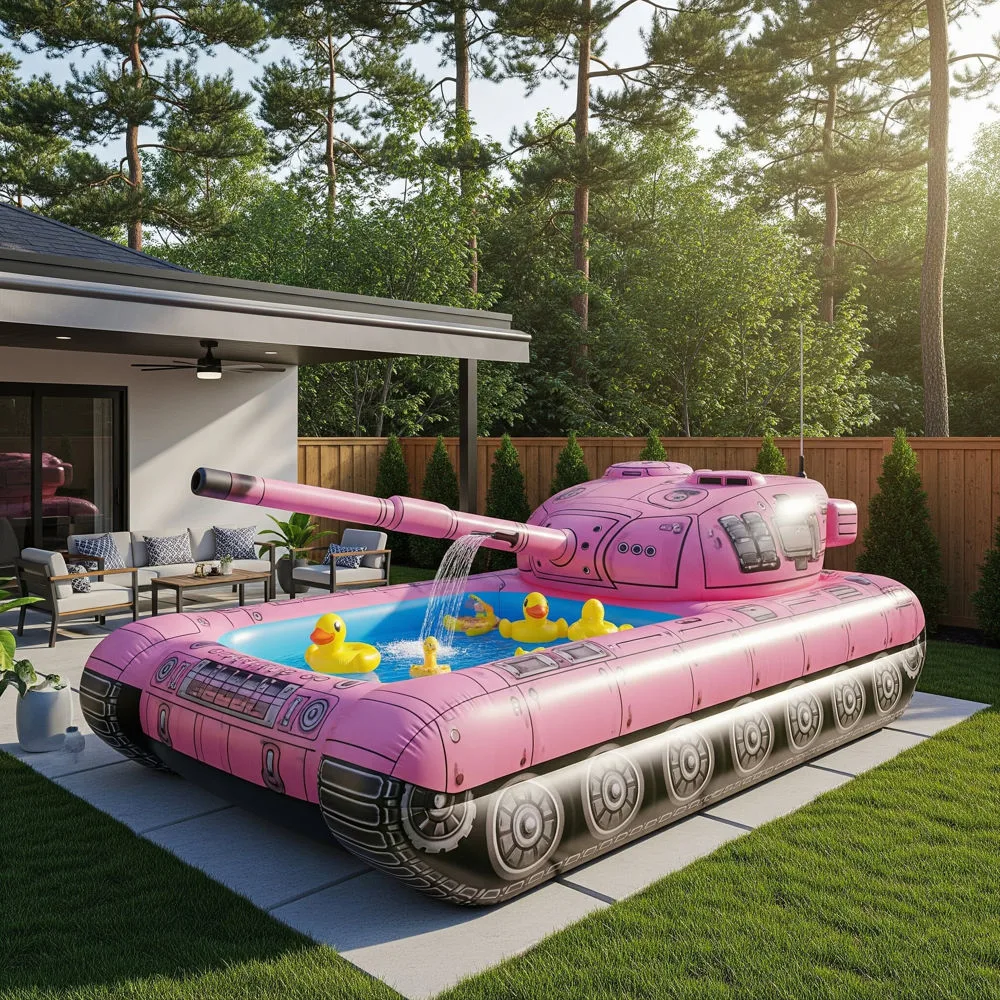
Safety should always be the top priority when operating any swimming facility, and inflatable tank pools are no exception. While these pools may seem less intimidating than permanent installations, they still require comprehensive safety measures to prevent accidents and injuries.
Essential Safety Equipment
Every inflatable tank pool area should include basic safety equipment readily accessible to all users. Life rings or rescue equipment should be positioned around the pool perimeter, along with a first aid kit specifically stocked for aquatic emergencies.
Pool alarms that detect unauthorized entry or unexpected water disturbance provide an additional layer of protection, especially important for families with young children. These systems can alert homeowners to potential problems even when the pool area isn’t actively supervised.
Supervision and Pool Rules
Establish clear pool rules and ensure all users understand and follow them consistently. Adult supervision is essential whenever children are in or around the pool, regardless of their swimming ability or the pool’s depth.
Designate specific areas for different activities, such as swimming versus playing, and enforce capacity limits to prevent overcrowding that could lead to accidents. Consider implementing a buddy system for stronger swimmers to assist those who are less confident in the water.
Barrier Systems and Access Control
Physical barriers around the pool area provide crucial protection against unauthorized access, particularly important for preventing unsupervised child access. Fencing should completely enclose the pool area with self closing, self latching gates that children cannot easily operate.
Pool covers offer additional protection when the pool isn’t in use, but should never be considered a substitute for proper barriers and supervision. Safety covers designed to support weight are preferable to simple floating covers that could create entrapment hazards.
Maximizing Your Investment: Getting the Most from Your Pool
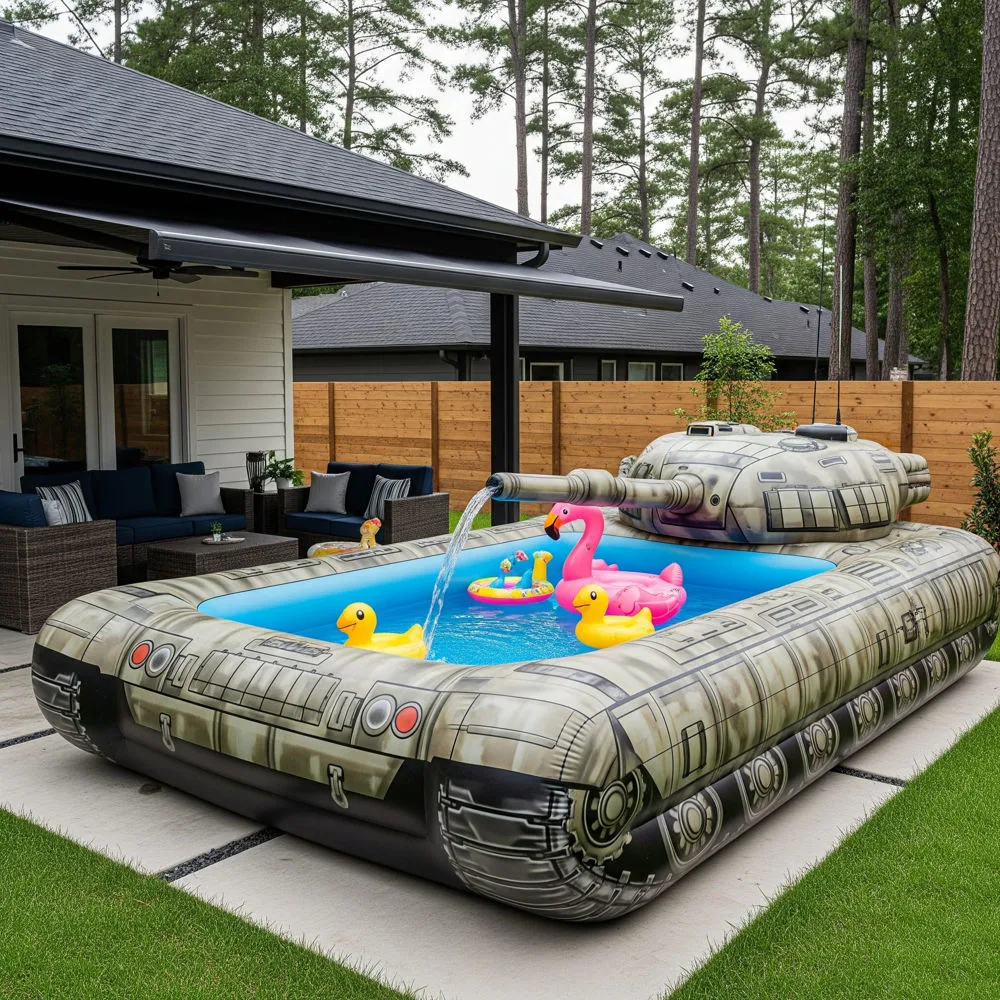
An inflatable tank pool represents a significant investment in family fun and property value. Maximizing this investment requires strategic planning, proper maintenance, and creative utilization that extends beyond basic swimming activities.
Enhancing the Pool Experience
Transform your inflatable tank pool into a complete recreational destination by incorporating complementary features and accessories. Pool lighting systems extend usable hours into evening periods, while heating systems can extend the swimming season in cooler climates.
Consider adding water features such as fountains or waterfalls that enhance both visual appeal and water circulation. These features can often be integrated with existing filtration systems for efficient operation.
Multi Season Utilization
In many climates, inflatable tank pools can provide year round enjoyment with proper planning and equipment. Pool heaters, whether electric, gas, or solar powered, can maintain comfortable temperatures even during cooler months.
Cold weather use requires additional safety considerations and potentially modified maintenance schedules, but the extended season significantly increases the pool’s value proposition.
Community and Social Benefits
An inflatable tank pool naturally becomes a gathering place for family and friends, providing opportunities for social interaction and community building. Pool parties, swimming lessons, and aquatic exercise sessions can all center around your pool installation.
Consider the social aspects when planning your pool area, including adequate seating, shade structures, and entertainment options that complement the aquatic experience.
Troubleshooting Common Issues
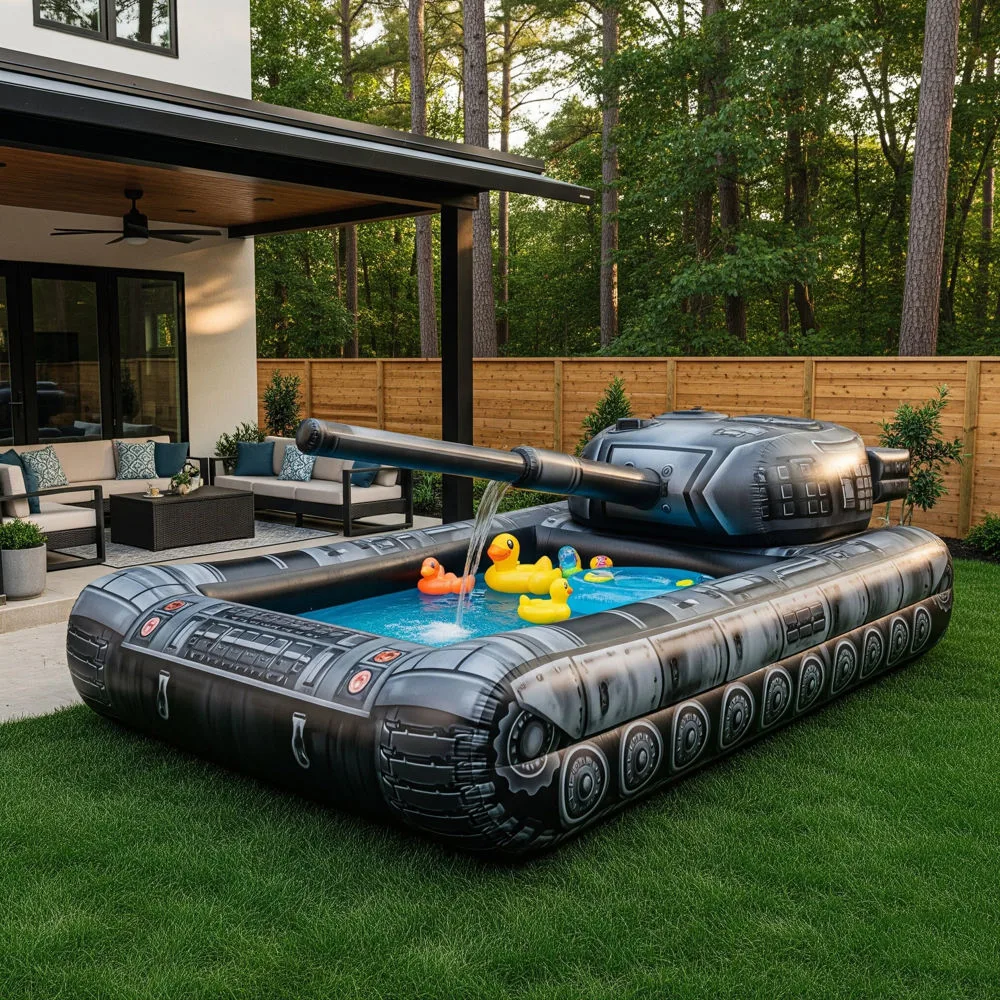
Even well maintained inflatable tank pools occasionally experience problems that require attention. Understanding common issues and their solutions helps maintain optimal performance and prevents minor problems from becoming major headaches.
Structural Problems and Solutions
Small punctures or tears in the pool material are among the most common issues faced by inflatable tank pool owners. Most quality pools include repair kits with patches and adhesive designed specifically for the pool materials.
Address structural problems immediately to prevent water loss and further damage. Clean and dry the affected area thoroughly before applying patches, and allow proper curing time before refilling the pool.
Water Quality Challenges
Cloudy water, algae growth, or chemical imbalances can affect both the appearance and safety of your pool. These issues typically result from inadequate filtration, improper chemical balance, or contamination from external sources.
Systematic troubleshooting involves testing water chemistry, inspecting filtration systems, and identifying potential contamination sources. Most water quality problems can be resolved through proper chemical adjustment and enhanced filtration.
Equipment Malfunctions
Pumps, filters, and other mechanical systems occasionally require attention or replacement. Regular maintenance and inspection help identify potential problems before they cause system failures.
Keep spare parts and basic tools readily available for common repairs, and establish relationships with local pool supply retailers who can provide technical support and replacement components when needed.
The Future of Backyard Swimming
The inflatable tank pool industry continues to evolve with new technologies and materials that enhance performance, durability, and user experience. Smart pool systems with automated monitoring and chemical dispensing are becoming more accessible, while advanced materials promise even longer service life.
Environmental considerations are driving innovations in energy efficient pumps, solar heating systems, and water conservation technologies. These developments make inflatable tank pools increasingly attractive alternatives to traditional swimming pool installations.
As urban populations grow and available space becomes more limited, the flexibility and portability of inflatable tank pools make them increasingly relevant for modern homeowners seeking aquatic recreation options.
Conclusion
The inflatable tank pool represents a perfect solution for families seeking the joy and benefits of pool ownership without the commitment and expense of permanent installation. These versatile aquatic systems combine convenience, affordability, and genuine swimming enjoyment in ways that traditional pools simply cannot match.
From the initial excitement of setup through seasons of family memories and refreshing relaxation, an inflatable tank pool can transform your backyard into a personal oasis. The key to success lies in choosing the right model for your specific needs, maintaining proper setup and maintenance routines, and prioritizing safety in all aspects of pool operation.
Whether you’re seeking relief from summer heat, a venue for family gatherings, or a platform for aquatic exercise and recreation, an inflatable tank pool offers the flexibility and performance to meet your needs. The investment in quality equipment and proper maintenance will provide years of enjoyment and create lasting memories for family and friends.
The decision to add an inflatable tank pool to your property represents more than just acquiring recreational equipment. It’s an investment in lifestyle enhancement, family bonding, and the simple pleasure of cool, refreshing water whenever you need it most. With proper selection, installation, and care, your inflatable tank pool will provide endless hours of aquatic enjoyment and become the centerpiece of your backyard entertainment space.

